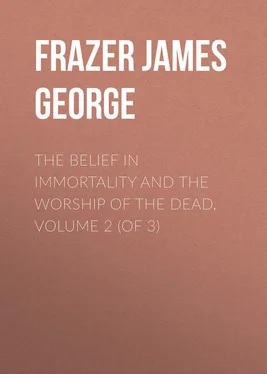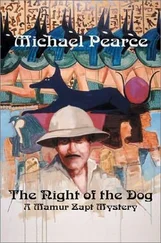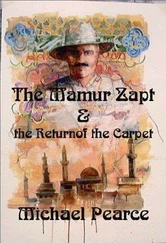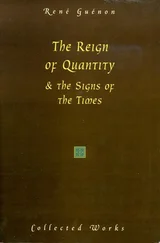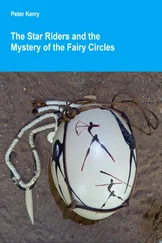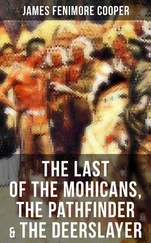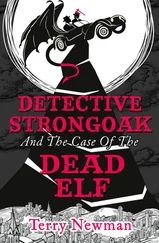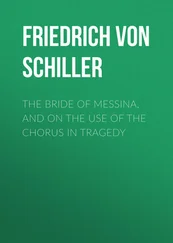James Frazer - The Belief in Immortality and the Worship of the Dead, Volume 2 (of 3)
Здесь есть возможность читать онлайн «James Frazer - The Belief in Immortality and the Worship of the Dead, Volume 2 (of 3)» — ознакомительный отрывок электронной книги совершенно бесплатно, а после прочтения отрывка купить полную версию. В некоторых случаях можно слушать аудио, скачать через торрент в формате fb2 и присутствует краткое содержание. Жанр: foreign_antique, foreign_prose, на английском языке. Описание произведения, (предисловие) а так же отзывы посетителей доступны на портале библиотеки ЛибКат.
- Название:The Belief in Immortality and the Worship of the Dead, Volume 2 (of 3)
- Автор:
- Жанр:
- Год:неизвестен
- ISBN:нет данных
- Рейтинг книги:3 / 5. Голосов: 1
-
Избранное:Добавить в избранное
- Отзывы:
-
Ваша оценка:
- 60
- 1
- 2
- 3
- 4
- 5
The Belief in Immortality and the Worship of the Dead, Volume 2 (of 3): краткое содержание, описание и аннотация
Предлагаем к чтению аннотацию, описание, краткое содержание или предисловие (зависит от того, что написал сам автор книги «The Belief in Immortality and the Worship of the Dead, Volume 2 (of 3)»). Если вы не нашли необходимую информацию о книге — напишите в комментариях, мы постараемся отыскать её.
The Belief in Immortality and the Worship of the Dead, Volume 2 (of 3) — читать онлайн ознакомительный отрывок
Ниже представлен текст книги, разбитый по страницам. Система сохранения места последней прочитанной страницы, позволяет с удобством читать онлайн бесплатно книгу «The Belief in Immortality and the Worship of the Dead, Volume 2 (of 3)», без необходимости каждый раз заново искать на чём Вы остановились. Поставьте закладку, и сможете в любой момент перейти на страницу, на которой закончили чтение.
Интервал:
Закладка:
At the time of their discovery the Maoris had attained to a fair level of barbaric culture. They lived in comfortable houses ornamented with carved work and with scrolls painted in red and white on the posts and beams. Their villages were fortified with earthworks, palisades, and trenches, and surrounded by large gardens planted with sweet potatoes, taro, and melons. 17 17 E. Shortland, Traditions and Superstitions of the Maoris , p. 202. The elaborate system of fortification employed by the Maoris, of which the remains may be seen by thousands, seems to have no exact parallel in Polynesia. See Elsdon Best, "The Peopling of New Zealand," Man , xiv. (1914) p. 75. These native forts or pas , as they were called, had often a double or even quadruple line of fence, the innermost formed by great poles twenty or thirty feet high, which were tightly woven together by the fibrous roots of a creeper. They were built by preference on hills, the sides of which were scarped and terraced to assist the defence. Some of them were very extensive and are said to have contained from one to two thousand inhabitants. Many of them were immensely strong and practically impregnable in the absence of artillery. It is believed that the habit of fortifying their villages was characteristic of the older race whom the Maoris, on landing in New Zealand, found in occupation of the country. See W. Yate, An Account of New Zealand (London, 1835), pp. 122 sqq. ; G. F. Angas, Savage Life and Scenes in Australia and New Zealand (London, 1847), i. 332 sq. ; Elsdon Best, "Notes on the Art of War as conducted by the Maoris of New Zealand," Journal of the Polynesian Society , vol. xii. no. 4 (December 1903), pp. 204 sqq. ; W. H. Skinner, "The Ancient Fortified Pa ," Journal of the Polynesian Society , vol. xx. no. 78 (June 1911), pp. 71-77.
"They excel in tillage," says Captain Cook, as might naturally be expected, where the person that sows is to eat the produce, and where there is so little besides that can be eaten: when we first came to Tegadoo, a district between Poverty Bay and East Cape, their crops were just covered, and not yet begun to sprout; the mould was as smooth as in a garden, and every root had its small hillock, ranged in a regular quincunx, by lines, which with the pegs were still remaining in the field. 18 18 Captain James Cook, Voyages (London, 1809), ii. 50.
They understood the arts of irrigating their gardens 19 19 The ruins of native irrigation works are to be found in New Zealand as well as in other parts of Polynesia (J. Deniker, The Races of Man , p. 501).
and of manuring them so as to render the soil light and porous and therefore better suited for the growth of the sweet potato, their favourite food. For this purpose they used sand, and in the Waikatoo district, where the root was formerly much cultivated, deep excavations, like the gravel pits of England, may still be seen, from which the natives extracted sand to fertilise their gardens. 20 20 E. Shortland, Traditions and Superstitions of the New Zealanders , pp. 202 sq.
Moreover, they cultivated various species of native flax and used the fibre for the manufacture of garments, first scraping it and drying it in the sun, then steeping it in water, and afterwards beating it with wooden mallets. Thus prepared the flax was dyed black or reddish brown and woven into cloth with broad borders of neat and varied patterns. The stronger and coarser fibres were made into string, lines, and cordage of all sorts. 21 21 Captain James Cook, Voyages , ii. 30 sq. , 40 sq. ; W. Yate, An Account of New Zealand (London, 1835), pp. 157 sqq. ; E. Shortland, Traditions and Superstitions of the New Zealanders , pp. 204 sqq. ; R. Taylor, Te Ika A Maui , p. 5.
The Maoris also built large and magnificently adorned canoes, 22 22 Captain James Cook, Voyages , ii. 47 sq. ; W. Yate, op. cit. pp. 161 sqq.
in which they made long voyages; for example, they invaded and conquered the Chatham Islands, which lie to the eastward across the open sea about five hundred miles distant from the nearest coast of New Zealand. 23 23 A. Shand, "The Occupation of the Chatham Islands by the Maoris in 1835," Journal of the Polynesian Society , vol. i. no. 2 (July 1892), pp. 83 sqq.
In hunting they had little opportunity to shine, for the simple reason that in their country there were no beasts to hunt except rats; 24 24 R. Taylor, op. cit. p. 496; A. R. Wallace, Australasia (London, 1913), pp. 442 sq.
even birds they could not shoot, because they had no bows and arrows to shoot them with, 25 25 E. Shortland, Traditions and Superstitions of the New Zealanders , p. 212; Elsdon Best, "Notes on the Art of War as conducted by the Maori of New Zealand," Journal of the Polynesian Society , vol. xi. no. 4 (December 1902), p. 240.
but they made some amends by catching them in ingeniously constructed snares. 26 26 E. Shortland, Traditions and Superstitions of the New Zealanders , pp. 212 sqq. ; R. Taylor, Te Ika A Maui , pp. 442 sq.
They caught fish both with nets, some of which were of enormous size, and with hooks made of bone or shell. 27 27 Captain James Cook, Voyages , i. 49 sq. ; W. Yate, An Account of New Zealand , p. 160.
They displayed great skill and infinite patience in fashioning, sharpening, and polishing their stone implements and weapons. 28 28 Captain James Cook, Voyages , ii. 49; R. Taylor, Te Ika A Maui , p. 4.
In council they were orators, and in the battlefield warriors whose courage has merited the respect, and whose military skill has won the admiration of the British troops opposed to them. 29 29 R. Taylor, Te Ika A Maui , p. 4. The Maoris delivered set speeches composed according to certain recognised laws of rhetoric, and their oratory was distinguished by a native eloquence and grace. See E. Shortland, Traditions and Superstitions of the New Zealanders , pp. 186 sqq.
In short, the Maoris were and are one of the most highly gifted among the many uncivilised peoples which the English race, in its expansion over the world, has met and subdued. It is therefore of peculiar interest to learn what conceptions they had formed of man's spiritual nature and his relations to the higher powers.
§ 3. The Beliefs of the Maoris concerning the Souls of the Living
Like most other peoples, whether savage or civilised, the Maoris explained the mystery of life in man by the presence of an invisible spirit or soul, which animates his body during life and quits it at death to survive the separation for a longer or shorter time either in this world or another. But like many others who have sought to fathom this profound subject, the Maoris would seem to have experienced some difficulty in ascertaining the precise nature of the human soul. When the natural man, on the strength of his native faculties, essays to explore these dark abysses and to put his vague thoughts into words, he commonly compares his soul either to his breath or to his shadow and his reflection, and not content with a simple comparison he is led, by a natural confusion of thought, to identify more or less closely the imperceptible entity which he calls his soul with one or both of these perceptible objects. To this general rule the Maori is apparently no exception. He has two words which he specially uses to designate the human spirit or soul: one is wairua , the other is hau . 30 30 Elsdon Best, "Spiritual Concepts of the Maori," Journal of the Polynesian Society , vol. ix. no. 4 (December 1900), pp. 177 sqq. , 189 sqq.
Of these words, wairua , the more usual name, is said to mean also a shadow, an unsubstantial image, a reflection, as of a person's face from a polished surface; 31 31 E. Tregear, Maori-Polynesian Comparative Dictionary , pp. 591 sq. , s. v. "wairua."
and we may surmise that these were the original and proper meanings of the term. Similarly hau , which is described as "the vital essence or life principle" in man, 32 32 Elsdon Best, op. cit. p. 189.
appears primarily to mean "wind," 33 33 E. Tregear, Maori-Polynesian Comparative Dictionary , p. 52, s. v. "hau"; Elsdon Best, op. cit. p. 190.
from which we may infer that in its application to man it denotes properly the breath. The idea of the soul as a breath appears in the explanation which was given to Dumont d'Urville of the Maori form of salutation by rubbing noses together. The French traveller was told that the real intention of this salute was to mingle the breath and thereby the souls of the persons who gave each other this token of friendship. But as his informant was not a Maori but a certain Mr. Kendall, the truth of the explanation remains doubtful, though the Frenchman believed that he obtained confirmation of it from his own observation and the testimony of a native. 34 34 J. Dumont d'Urville, Voyage autour du Monde et à la recherche de la Pérouse, Histoire du Voyage (Paris, 1832-1833), ii. 558 sq.
On the other hand the comparison of the soul to a shadow comes out in the answer given by a Maori to an Englishman who had asked him why his people did not prevent their souls from passing away to the nether world. The Maori replied by pointing to the Englishman's shadow on the wall and asking him whether he could catch it. 35 35 William Brown, New Zealand and its Aborigines (London, 1845), p. 81.
Интервал:
Закладка:
Похожие книги на «The Belief in Immortality and the Worship of the Dead, Volume 2 (of 3)»
Представляем Вашему вниманию похожие книги на «The Belief in Immortality and the Worship of the Dead, Volume 2 (of 3)» списком для выбора. Мы отобрали схожую по названию и смыслу литературу в надежде предоставить читателям больше вариантов отыскать новые, интересные, ещё непрочитанные произведения.
Обсуждение, отзывы о книге «The Belief in Immortality and the Worship of the Dead, Volume 2 (of 3)» и просто собственные мнения читателей. Оставьте ваши комментарии, напишите, что Вы думаете о произведении, его смысле или главных героях. Укажите что конкретно понравилось, а что нет, и почему Вы так считаете.
